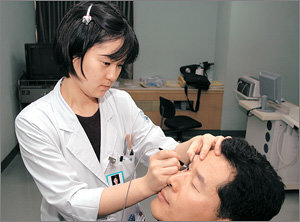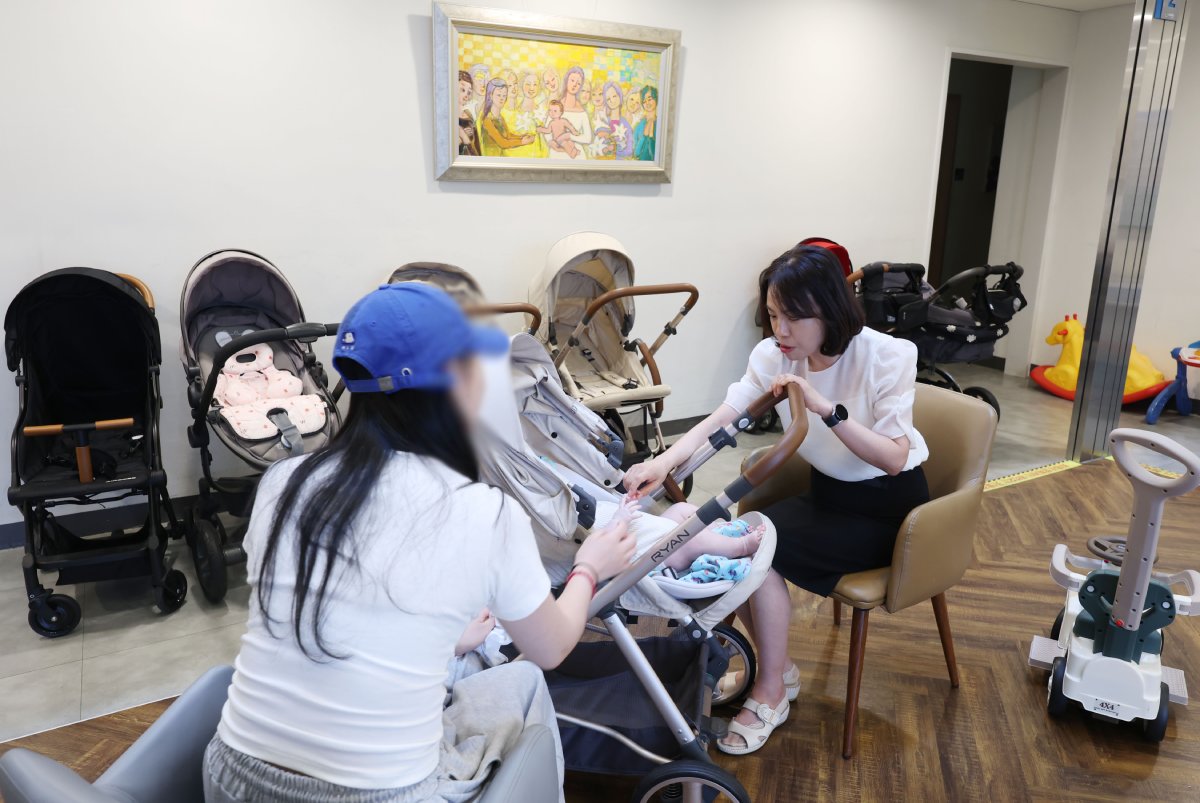Glaucoma May Lead to Blindness if Left Untreated
Glaucoma May Lead to Blindness if Left Untreated
Posted November. 07, 2004 23:30,

Mr. Roh (58, private business owner) has been suffering from poor eyesight since last year. He thought it was because of his age and visited the ophthalmologist only recently. His diagnosis was terminal stage glaucoma. Because his optic nerves were already damaged, he was in danger of blindness even if he received treatment.
Glaucoma is a disease in which ones visual field narrows down due the drying of the optic nerve fibroblasts. Up to 90 percent of patients do not feel any symptoms until the last stage of the disease. Therefore, many people miss the chance to receive treatment and end up losing their eyesight.
Recently, in the field of ophthalmology, there have been active studies on pre-diagnosing glaucoma before the visual field starts to narrow down. At the American Academy of Ophthalmologys (AAO) international seminar held in New Orleans last month, the attention was on the study of predicting the risk of glaucoma by the thickness of the cornea.
Thinner Corneas Have More Risk of Glaucoma-
Optic nerve damage is a natural process of old age. There are 1.2 million optic nerve fibroblasts in each eye, and about 5,000 die every year. If more than 500,000 are damaged, one can feel a narrowed visual field. Glaucoma is a disease in which the optic nerves are damaged at an abnormally fast rate.
The reason why optic nerves die quickly has not been revealed yet. It has only been reported that age, pedigree, extreme shortsightedness, diabetes, high blood pressure, and other factors are related to glaucoma. In many cases, the disease is unrelated to these factors. Thus, there are continued efforts to find the causes of glaucoma.
Joshua Kim, a practicing doctor in the United States, said at this seminar, As a result of examining 44 glaucoma patients for seven years and six months, I found out that the damage to the optic nerves progressed at a faster rate when the cornea was thinner.
Professor Hong Young-jae and his team at the ophthalmology department at Severance Hospital measured the thickness of 643 ophthalmology patients corneas and found out the average was 555μm. The average cornea thickness of glaucoma patients was thinner, at 537μm.
Optic nerves are damaged because of a hole in the sclera that is located in the back of the eyeball through which optic nerve fibers go through. If the intraocular pressure goes up, this part resembling a thin sieve is deformed, pressing the fibers of the optic nerves.
The thinner the cornea, the easier it is to become deformed, increasing the risk of damage to the optic nerve. The study results that show the relationship between cornea thickness and optic nerve damage shows that when given the thickness of the front cornea, it is possible to also estimate the thickness of the rear cornea.
A Lasik operation, which involves a thin cutting of the cornea, cannot be a cause of glaucoma since it has nothing to do with the sclera. However, the interocular pressure can seem lower than reality after a Lasik operation because the cornea has become thinner. Therefore those who have a higher risk of glaucoma should be examined for it before going through a Lasik operation.
Skin Color and Glaucoma-
There are active studies on the different outbreak rates of glaucoma between races, based on research on the thickness of corneas.
Ishtak Ahmed of India gathered 1,149 glaucoma patients of various races and compared the thickness of their corneas. It turned out that Africans had the thinnest corneas, followed by Indians, Asians, and Caucasians in that order. The racial order of outbreak rates of glaucoma was the same as the order of cornea thickness.
According to these results, Asians, who have thinner corneas than Caucasians, have more risk of being afflicted with glaucoma. Since people suffering from much stress are more vulnerable to an increase in intraocular pressure, they should be examined for glaucoma every year if they are over 40 years old.
(Advice: Professor Park Ki-ho of the Seoul National University Hospital Ophthalmology Department, and professors Hong Young-jae and Seo Gyung-ryul of the Severance Hospital Ophthalmology Department.)
TK Sohn sohn@donga.com



![[단독]尹 “국무위원조차 살길 찾아 떠나려…없는 얘기 한다” 진술](https://dimg.donga.com/c/138/175/90/1/wps/NEWS/IMAGE/2025/07/10/131976712.1.jpg)



